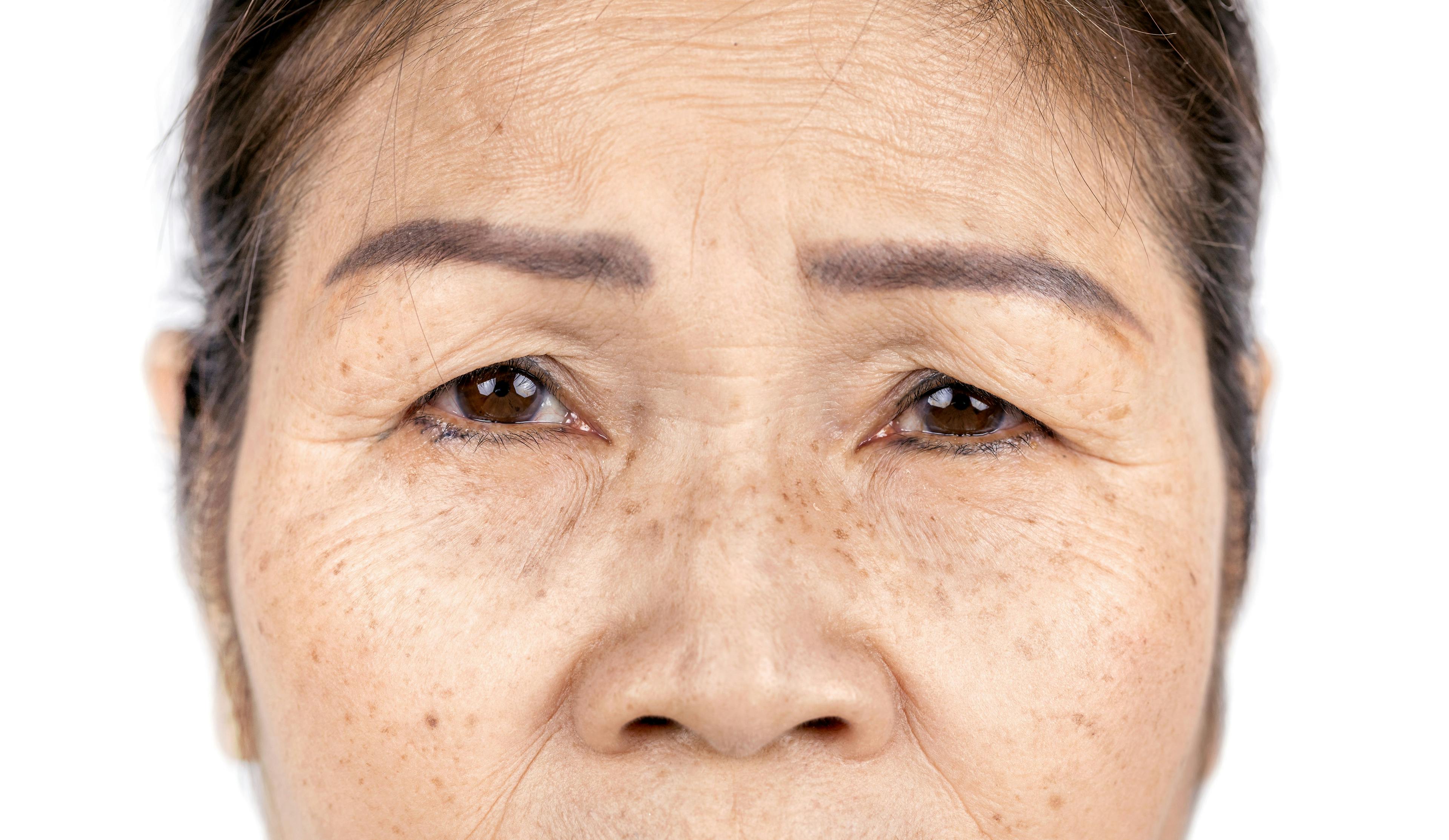- Acne
- Actinic Keratosis
- Aesthetics
- Alopecia
- Atopic Dermatitis
- Buy-and-Bill
- COVID-19
- Case-Based Roundtable
- Chronic Hand Eczema
- Chronic Spontaneous Urticaria
- Drug Watch
- Eczema
- General Dermatology
- Hidradenitis Suppurativa
- Melasma
- NP and PA
- Pediatric Dermatology
- Pigmentary Disorders
- Practice Management
- Precision Medicine and Biologics
- Prurigo Nodularis
- Psoriasis
- Psoriatic Arthritis
- Rare Disease
- Rosacea
- Skin Cancer
- Vitiligo
- Wound Care
News
Video
Dermatology Times
The Role of Emollients and Moisturizers in Eczema
In this episode of DermView, Adelaide Hebert, MD, highlights both emollients and moisturizers. She also talks about bathing and how often a child should bathe if they have eczema.
Adelaide Hebert, MD, chief of pediatric dermatology at the McGovern Medical School at UTHealth Houston, Texas highlights how her reasoning behind how often a child should bathe and how important emollients and moisturizers are to eczema care.
To listen to what she had to say, watch the video below.
Morgan Petronelli, Associate Editor: Well thank you so much for joining me today. My name is Morgan Petrelli, Associate Editor with dermatology times and today I'm joined by Dr. Adelaide Hebert, Dr. Hebert if you want to introduce yourself and any of the research that you're currently conducting.
Adelaide Hebert, MD: I'm Dr. Adelaide Hebert. I work at the University of Texas Medical School in Houston, Texas. I've been chief of pediatric dermatology here for 37 years, and have been actively engaged in clinical research for the past 36 years. The research interests that I have include atopic dermatitis, psoriasis, hyperhydrosis, acne, rosacea, skin, soft tissue infections, and diaper dermatitis. We really will study almost anything that deals with skin in both pediatric and adult realms. I don't typically do IV antibiotics studies, but we're very interested in biologic therapy and the new Janus kinase (JAK) inhibitors. We do the full scope we feel of research within the adult and pediatric realm.
Q: What about when it comes to bathing? How important is that?
Well I'm pretty flexible with my patients and parents regarding bathing. I often start before I launch into what I want them to do, I see what they're doing currently. If the parent bathes the child every day or every other day, that's fine.
I'm of the mindset to let children bathe every day I usually ask if the child enjoys playing in the bath. Most of the time the answer is yes. There's a small group of patients who don't tolerate water on their skin very well. We might diminish the number of times a child [a child bathes], but I know in our hospital with the sickest children, they do play therapy, not in a tub, but they have a little swimming pool, if you will, that they put toys in and the children pack the water and play with the toys.
So we know that water is very fresh and most children enjoy a bath. It's also a time of one on one with the parent and the child, which I think is a really wonderful bonding experience. It allows the parent to examine the skin very carefully looking for infections, looking for fissures that develop, looking for what we call hotspots, and new breakthrough areas of spongiotic dermatitis. So I think all of those opportunities are really wonderful.
What's critical though, is after bathing, the child should be patted dry, not completely dried off, and then the water of the bath trapped [into the skin] with the moisturizer, usually within 3 to 5 minutes after the bath to optimize the trapping of the water. So a bath can be a very therapeutic component of the care. I'm very flexible in that now some parents really insist on once a week bathing, and the child is doing well. I'm fine with that. There are 2 schools of thought and I try not to be rigid in that unless the child is really filthy dirty, in which case, I tend to make the suggestion for hygiene and skin safety that the child be bathed a bit more frequently.
Q: How are emollients and moisturizers different? How do they work together to treat eczema?
I think of emollient and moisturizers as being identical. They are so critical in restoring the barrier. They're the fundamental cornerstone of all the guidelines currently available for atopic dermatitis [AD] management, [and] we really need to employ these. When children or families are impoverished, we can suggest agents that are found in the grocery store where they can use food stamps.
We tend to use whatever will restore that barrier. It may not be optimized care, but even the most impoverished patient in general can afford something in the realm of in the emollient/ moisturizer. But again, I placed special emphasis on those moisturizers that contain ceramides, because, in my experience, they have given me the best results for the patients for whom I provide care.
Q: What are some key counseling points regarding emollient and moisturizers?
Most importantly, find one that the child will tolerate. I'll generally recommend 2 or 3. In our clinic, we are allowed to provide samples, which I think is beneficial because a parent, before they spend any money, can try a sample on a child to see what they tolerate.
Sometimes it's a matter of personal preference. How does that emollient feel on the skin? How easy is it for the parent to apply that agent? We have broken skin [and] we know that skin creams which come in tubs are both cost effective and effective in repairing the barrier, but they are thicker. They're a little more work for the parents to apply. Sometimes the child will become fretful and won't tolerate that degree of rubbing over the time period required to get it to go into the skin.
Some emollients come as sprays. Some emollients come as foams and sometimes those are more tolerated by any individual patient. I'm not rigid in what the parent and the patient will use, as long as they put a moisturizer on at least twice a day because this makes such a difference. It's surprising if parents come in, and they haven't had that fundamental education, and giving them the right guidance, and the right product can make a marked difference in the child's care.
I do try to avoid lotions, because they contain more water, and they can dry the skin out. If a lotion seems to be what the patient is tolerating and the skin regimen is going well again, I’m flexible, and try to allow them to use what they are most comfortable with. All these things come into play the affordability of the product [and] the ability to access it readily. We want the parents to be able to use the regiments that we outlined for them, and not make it so complicated, that it's difficult to adhere to and difficult to do daily.
Q: What does your office recommend for patients when it comes to over the counter products?
We use almost every product available in the over-the-counter space. We like the Eucerin Eczema Care. We use all the CeraVe products, those are easy to find and readily available. We also have patients who will use Cetaphil Restoraderm. We have some who prefer the Gold Bond products.
There are indeed many more products that contain ceramides that I haven't mentioned. We tend to have samples of these parents will often recognize these brand names, and they feel very comfortable with them. Sometimes patients are using a product that's good but doesn't get in their ceramides. We will ask them the next time they make a purchase to consider getting the agent that contains the ceramides as we think it will enhance the regimen that they're already conducting for their child.
Q: When would a referral to a physician for more aggressive therapies be recommended?
Well, we like to treat eczema when it's not too profound. Obviously, if the primary care physician or the nurse practitioner [NP] is not comfortable and the child is not getting better, is having recurrent infections, is not sleeping or growing, or if that eczema just seems in any way to not be able to be brought under control, we're happy to see those patients in our clinic.
I think virtually every dermatologist who cares for AD is well versed in both what current therapies are available and also, we have some emerging therapies that are extremely exciting. We are very blessed in the atopic realm that some new therapies have allowed us to bring many of these patients under better control, particularly if they're age 6 and older. Currently, I'm certainly conducting research on some oral medications in the JAK inhibitor class that I think will be a great improvement in our armamentarium. Again, many patients don't like to take shots and prefer pills, but we really must design a therapy that's going to be available for the patient while tolerated by the patient, of course covered by their insurance plan.

Newsletter
Like what you’re reading? Subscribe to Dermatology Times for weekly updates on therapies, innovations, and real-world practice tips.





















